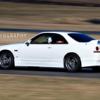17" Vs 18" Wheels For Motorsport
Announcements
-
Similar Content
-
Latest Posts
-
Diagnosing with and without is mostly the same. You need to know, as Duncan asked, and what conditions. Car hot, cold, idling, driving, if while driving what rpms, is when you're varying, or is it when held constant. From there it's understanding what can be causing it. Starting with pretending all of the sensors are correct. Which means if it's going rich, why would it be thinking more air is going in than it is, and under what conditions. So things like if only when under boost, it could be be a loose intake piping joint. It's just understanding the system, and understanding when/how the problem occurs, and then if it's only occuring in specific scenarios, what can be causing it. ECU specifically, if it's aftermarket, it'll have software you can use, for the Skylines on factory ECU, there is Nissan Consult you can use. Most ECUs have a way to get data from them.
-
How do you go about diagnosing ecu's that don't have data logging, is it more experience at that point and just trying out things that you think will fix the issue?
-
Stock O2 are basically useless beyond anything at stoich. Any misfire will also be seen as lean. The stock O2 also read a collective exhaust gas volume, not each cylinder. Sputtering and missing means not each cycle is firing, and some are. Which means even if rich, as shit, on cylinders as they miss, they'll read lean, but the cylinders that did fire will read rich, and combined, well, they can read anything from rich to lean. Start with the basics before even going looking at sensor values. Edit: I say the above, and that's coming from the guy with a few thousand dollars worth of scan tools sitting right beside me right now that I use frequently for my job.
-
I just finished up a manual swap and I have a 1999 S2 AWD automatic in my garage, depending on where you are located. I'm in the the midwest of the US.
-
I’ve heard it can be done, you need to redrill the holes where they bolt to the chassis and apart from that they are the same. I’ve never done it or know anyone personally that has, it’s just something I’ve heard
-






Recommended Posts
Create an account or sign in to comment
You need to be a member in order to leave a comment
Create an account
Sign up for a new account in our community. It's easy!
Register a new accountSign in
Already have an account? Sign in here.
Sign In Now